#histone
Text

The Nucleosome: DNA's Fancy Packaging and Party Trick!
Imagine cramming two meters of yarn into a pea-sized box. Sounds impossible, right? Well, that's the impressive feat that cells pull off every single day with DNA! They use a clever structure called the nucleosome to pack this massive genetic blueprint into the tiny nucleus.
The journey began in 1974 when Don and Ada Olins, peering through an electron microscope, spotted repeating beads – the first glimpse of nucleosomes. Roger Kornberg, building upon this observation, proposed the now-iconic "subunit theory," envisioning DNA wrapped around histone protein cores. This theory, later solidified by Pierre Oudet's term "nucleosome," laid the groundwork for further exploration. The 1980s witnessed a flurry of activity, with Aaron Klug's group using X-ray crystallography to reveal the left-handed superhelical twist of DNA around the histone octamer. But the true masterpiece arrived in 1997 when the Richmond group, armed with advanced techniques, unveiled the first near-atomic resolution crystal structure of the nucleosome. This intricate map, showcasing the precise interactions between DNA and histones, remains a cornerstone of our understanding.
The Players:
DNA: The star of the show, carrying our genetic code in the form of a double helix.
Histones: Protein spools around which DNA tightly winds. Imagine eight of them forming a core, like a mini-protein drum set.
Linker DNA: Short stretches of DNA connecting the spools, like the spaces between beads on a necklace.
The Steps:
Wrap and Roll: Picture DNA gracefully wrapping around the histone core, like thread around a spool. Each nucleosome holds about 146 base pairs of DNA, making about 1.67 turns.
Connect and Repeat: Linker DNA bridges the gap between nucleosomes, forming a "beads-on-a-string" structure. Think of it as pearls strung between the spools.
Compact and Condense: This repetitive unit folds further, creating intricate 30-nanometer fibers. Imagine these as twisted strands of pearls!
Here's the coolest part: histones aren't static. They can be chemically modified, like adding or removing phosphate groups. These modifications act like tiny flags that tell the cell how tightly to wrap the DNA, essentially throwing a "party" for specific genes by making them more accessible. This fine-tuning allows cells to respond to their environment and express the right genes at the right time. Understanding the nucleosome model is crucial for unraveling the mysteries of gene regulation and diseases like cancer. By studying how modifications affect nucleosome structure and gene access, scientists can develop new therapies to target specific genes and potentially treat diseases at the root cause.
While the nucleosome model is the foundation, the story gets even more intriguing. Different histone types and modifications create variations, influencing chromatin structure and function. Think of it as different music genres influencing the dance moves! Additionally, other proteins interact with the nucleosome, adding another layer of complexity to this fascinating choreography.
The nucleosome model is more than just a neat way to package DNA. It's a testament to the intricate dance between molecules that orchestrates life's processes. By understanding this fundamental structure, we gain deeper insights into cellular function, paving the way for advancements in medicine and beyond.
Remember, this is just the beginning! The world of nucleosomes and chromatin is vast and ever-evolving. So, keep exploring, keep questioning, and keep dancing to the rhythm of DNA!
#molecular biology#biology#science sculpt#life science#science#dna#biotechnology#genetics#Histone#Nucleosome#chromatin
8 notes
·
View notes
Text
The fundamental structural unit of chromatin is the nucleosome, an assembly consisting of a group of certain proteins, called histones (designated H1, H2A, H2B, H3 and H4, see figure 25.13a), wrapped in DNA (figure 25.13b). (...) In a nucleosome, B-DNA is wound around the histone unit by about 1.8 coils (figure 25.13b,c). (...) The nucleosomes are further folded to form a filament, with a diameter of ~30 nm, which has been proposed to have the structure down in figure 25.13d.
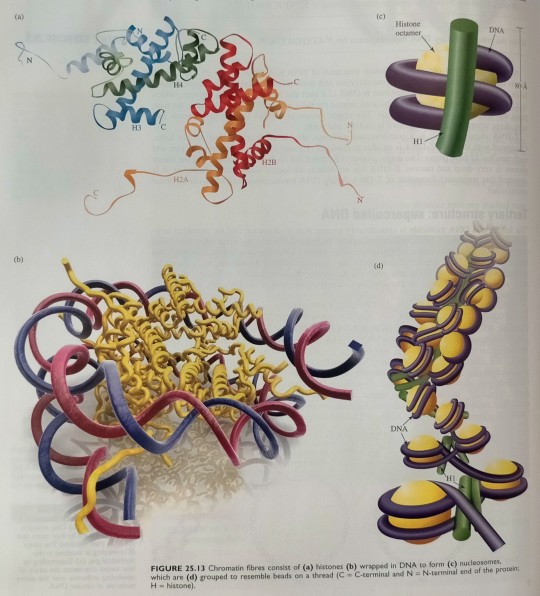
"Chemistry" 2e - Blackman, A., Bottle, S., Schmid, S., Mocerino, M., Wille, U.
#book quotes#chemistry#nonfiction#textbook#dna#chromatin#nucleosome#protein#deoxyribonucleic acid#bdna#histone#filament#folding
1 note
·
View note
Text
Histone Modifications
Hello, hello! Today's topic is histone modifications. We are continuing on with the epigenetics theme after my previous educational post about DNA methylation. As described in that post, epigenetics is the study of heritable genetic modifications without a change in DNA sequence (Takuno & Gaut, 2012). Similarly to DNA methylation, histone modifications affect gene expression through regulation of accessibility of the DNA for transcription (Bartova et al, 2008). But before we get into these modifications, let's go over a bit of background information!
What is a histone, anyway? A histone is a type of protein involved in DNA compaction and organization. In order to fit a genome's worth of DNA into the nucleus of a cell, that stuff needs to be extremely tightly packed! Histones help with this by forming an octomer called a nucleosome, which the DNA wraps around. These nucleosomes then coil together to form a fiber known as chromatin, which goes on to make up a chromosome. When the chromatin is less tightly packed, it is known as euchromatin and it is available for transcription (Bartova et al, 2008). When it is more tightly packed, it is known as heterchromatin, and polymerase proteins cannot access and transcribe the DNA (Bartova et al, 2008). Histone modifications regulate the transition between heterochromatin and euchromatin (Bartova et al, 2008).

(Above image from humanoriginproject.com)
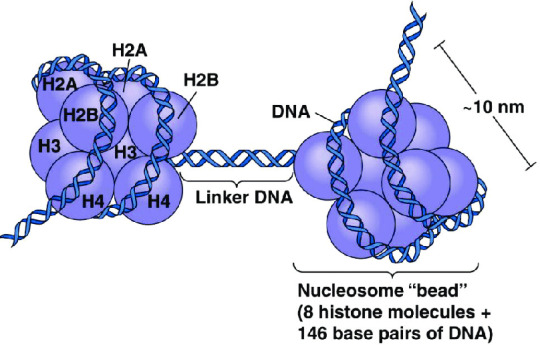
(Above image from Caputi et al, 2017)
The octomer core of a nucleosome is made up of two copies of each of four types of histones: H2A, H2B, H3, and H4 (Marino-Ramirez et al, 2017). Each of these histones includes an N-terminal tail structure, which is the main site of modification (Marino-Ramirez et al, 2017). The tails are modified through addition and removal of certain functional groups or other small structures. Types of modifications include acetylation by histone acetyltransferases, methylation by histone methyltransferases, phosphorylation by kinases, and ubiquitination (Marino-Ramirez et al, 2017). All of this information is used for naming specific histone modifications: Which histone is modified, which amino acid of the histone tail the modification is on, what type of modification is made, and in what amount. For example, H3K9me2 is the name for di-methylation of the 9th Lysine on an H3 histone's tail.
Some important histone modifications and their effects include:
H3K9me2: transcriptional activation + maintenance of CHG DNA methylation in plants
H3K9me3: transcriptional repression
H3K9ac: transcriptional activation
H3K4me1 & H3K4me3: transcriptional activation
H3K27me3: transcriptional repression
H4K16ac: transcriptional activation
H3S10p: DNA replication-related chromatin condensation
(He & Lehming, 2003)
Important Terms: histone, nucleosome, heterochromatin, euchromatin, transcription, epigenetics
5 notes
·
View notes
Text
Hello everybody I am popping on for my first art post in a blue moon

This one took like, 1 hour 10 minutes or something idk I never really bothered enough to count
15 notes
·
View notes
Text
Double-edge swords or unrecognized "factotums"? Reactive electrophiles turn off inflammation while enhancing aging
After activation, immune cells engage in metabolic remodeling to support the energy and biosynthetic demands for proliferation and effector functions. Notably, boosted glucose uptake and flux through glycolysis are common metabolic features of different immune cells. In particular, targeted glycolysis has been shown to profoundly affect immune responses, including infections, inflammation, and…

View On WordPress
#AGE complexes#antinflammatory#antioxidants#cell metabolism#electrophilic species#glycolysis#heterochromatin#histones#itaconate#methylglyoxal#oxidative stress#polyamines#telomeres#transcription factors#type 2 diabetes
0 notes
Video
youtube
Majority Histon Portable DAB Digital Radio Review
1 note
·
View note
Text
sheep anti-histone III
Discover high-quality sheep anti-histone III antibodies at Capralogics. Our antibodies are meticulously produced to ensure specificity and reliability, making them valuable tools for your research and diagnostic needs.
0 notes
Text
Chromatin immunoprecipitation of DNA cross-linked to modified histones coupled with with modern sequencing technologies, has opened the door to genome-wide analyses of changes in the epigenome.
"Plant Physiology and Development" int'l 6e - Taiz, L., Zeiger, E., Møller, I.M., Murphy, A.
#book quote#plant physiology and development#nonfiction#textbook#chromatin#immunoprecipitation#dna#cross linked#histones#dna sequencing#epigenome
0 notes
Note
So, about your archivists, do they have any growth spurts? Is there a point in time where they start to become much taller at a faster pace?

Kind of? In this version, they're not exactly a normal species with typical biological function, but more personifications of magic soo their growth is bit different
I thought the magic exists in two "forms". In their basic "condensed" form, its not tangible, all the magic shifting in one space not exacly on the physical plane. Their physical form works an extension of that magic, acting as a vessel to interact with the physical world and keep the base magic shielded and together. To use it, they convert the condensed magic into "loose" released magic that can then be utilised so with time the level builds back up. You can think of it like DNA packed around histones, to be accessed it has to be unwrapped
As kids the release speed isnt really that fast, they have very strong magic but its not the same amount they have available as they age so the vessel is rather small. In their teens the release rate is fast enough to have a lot of it at all times allowing it to support a larger body (that could be seen as sort of growth spurt) aaand as side effect causing magic to seep through their form and manifest as a galaxy-like skin. By late teens/adulthood, their magical baseline stabilizes, vessel catches up and they stop growing. Could still shape shift in larger or smaller forms but at an energy cost
Also with converting from stable to loose magic there's a release of energy in the form of light, giving the appearance of stars on their skin. I like the idea of the release rate changing depending on emotional state like in designs by Matthieu Cousin, sort of heart pumping faster when someone is stressed or angry - more stars appearing or with younger ones getting the galaxy effect with more magic being converted
#the owl house#toh#toh fanart#toh archivists#the archivists#toh collectors#owl house#toh collector#the collector#regulart#ask#c:i architect#c:i wayfarer
154 notes
·
View notes
Text
Stable or heritable DNA methylation and histone modifications have now been linked with specific abiotic stresses (Figure 24.15).

"Plant Physiology and Development" int'l 6e - Taiz, L., Zeiger, E., Møller, I.M., Murphy, A.
#book quotes#plant physiology and development#nonfiction#textbook#dna#methylation#histone#abiotic stress#biotic stress#gene expression#phenotype
0 notes
Note
so..does anyone else think about a military!soft!yandere oc x reader or do I get really giddy when scary,strong,intimidating men are soft only for you? like, they'd make food for you,bake for you,binge watch movies with you,giggle and gossip with you (bc military men are the BIGGEST gossip girls you will ever meet) btw I love ur writing! <3
"Honey, I'm home!"
You duck behind the corner of the living room wall, praying the displayed furniture and shipping boxes will be enough to cover you as you steady your breath. Your shoulders tense as the full weight of a bag is sludge against the couch; heavy footsteps rebounding towards the kitchen. The intruder hums a gentle tune as he enters the area, pausing with a click of his tongue as he opens the fridge. He sets down grocery bag and his spare keys with a sigh.
"Not much in here... Either just moved in or not taking care of yourself like you should. Good thing i picked up some stuff before I came. Baby? You know how long's it been since I last came home?"
Six months. Six, brief months of freedom, but he already knew that. It's the longest he's been gone. You thought you got lucky this time. Maybe, just maybe he finally gave up on you or something happened while he was away. It was a fool's belief. Not even death itself could deter that man from his way back home.
"Not answering, huh?" A beat of silence. You can hear the smile in histone o. "That's alright. Wanted to get dinner started, but we can play a little first."
You slink behind the couch as he exits the kitchen, shrinking yourself against the wall. You can already feel his arms around you. So inviting and warm, just like a real husband would be. Lord knows how many times he's used that excuse to gain access to your whereabouts and housing. You eye a box across the floor, handle poking from its flap. Between it and the door, there was only one you could reach before he found you - if he hadn't already. You creep towards the box, a boot blocking your way before you get far.
"Sweetheart, there you are!" Strong arms swoop you up from your spot on the floor, scarred lips planting comforting kisses on the nap of your neck. "Where ya been? I've been looking everywhere for you."
You struggle, drawing his attention to the box. Excitement in his voice picks up as he retrieve the item from within.
"Aw, is this the hunting knife I gave you for our anniversary? I'm so glad you're finally keeping some of the gifts I gave you now. I know you haven't been here long, but you do think we can settle down in this area? Nothing's better than the third place we moved to, but the view here is almost as spectacular as you."
#Yandere soldier#yandere oc#yandere#yandere scenarios#yandere x you#yandere x reader#yandere headcanons#yandere imagines#yandere insert#yandere blurb#yandere drabble#yandere x y/n#yandere x darling#male yandere
2K notes
·
View notes
Text
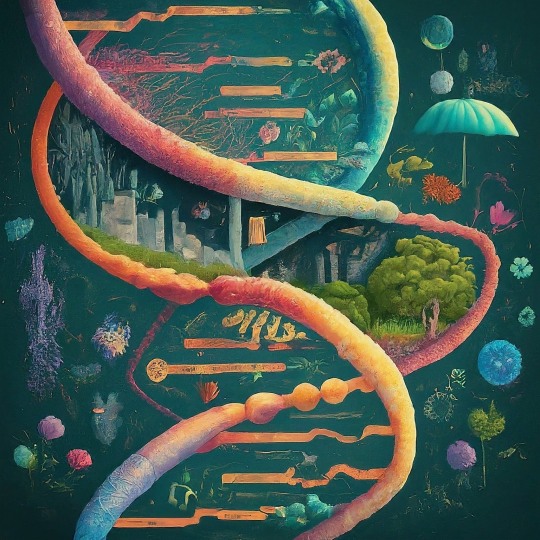
Epigenetics: A Journey Through Inheritance Beyond Genes
For centuries, scientists have been fascinated by the mysteries of heredity and how traits are passed down from generation to generation. DNA, the molecule that stores our genetic code, was once thought to be the sole determinant of our characteristics. However, a new frontier in biology, revealing a captivating layer of complexity beyond the DNA sequence itself: Epigenetics.
What is Epigenetics?
The term "epigenetics" was first coined in the 1940s by British biologist Conrad Waddington, but it wasn't until the late 20th century that its significance truly blossomed. Epigenetics, literally meaning "above genetics," refers to the study of heritable changes in gene expression that occur without alterations to the DNA sequence itself. Imagine DNA as the musical score, but epigenetics are the conductor and musicians who determine how the music is played. Through chemical modifications and adjustments to the proteins around DNA, epigenetics dictates which genes are turned on or off, influencing how cells function and ultimately shaping our health, development, and even behavior. Think of your DNA as the hardware: it contains the basic instructions for building and running your body. But epigenetics acts like the software, fine-tuning those instructions and determining which genes get turned on or off at specific times and in specific cells. These modifications, like chemical tags or changes in the packaging of DNA, don't alter the underlying code itself, but they can have a profound impact on how it's read and interpreted.
The Key Players:
DNA methylation: This process involves adding a methyl group to DNA, essentially silencing the gene it's attached to. Imagine it like putting a dimmer switch on a light bulb.
Histone modifications: Histones are proteins that package DNA, and changes in their structure can make genes more or less accessible to the cellular machinery needed for expression. Think of it like adjusting the curtains around a window - open wide for full light, slightly closed for filtered light.
Non-coding RNAs: These are molecules that don't code for proteins but can regulate gene expression in various ways. They're like the backstage crew in a play, ensuring everything runs smoothly.
The Power of Epigenetic Regulation
Epigenetic regulation plays a crucial role in various biological processes, including:
Development: During embryonic development, different cell types emerge from the same DNA blueprint by activating or silencing specific gene sets through epigenetic modifications.
Cellular differentiation: Specialized cells like muscle or nerve cells have unique functions due to differences in their active genes, controlled by epigenetic mechanisms.
Learning and memory: Epigenetic changes in brain cells are thought to be essential for learning and forming memories.
Aging: As we age, our epigenome accumulates changes that can contribute to age-related decline and disease.
Environmental influences: Diet, exercise, stress, and exposure to toxins can leave epigenetic marks on our genes, potentially impacting our health and even the health of future generations.
Epigenetics reminds us that we are not simply products of our genes. Our environment, choices, and experiences leave their mark, shaping who we are and potentially influencing our children's health. This deeper understanding of ourselves opens doors for self-awareness, empowerment, and potentially reshaping our narratives – not just as individuals, but as a species with the potential to leave a healthier legacy for generations to come.
#life science#biology#science sculpt#molecular biology#biotechnology#epigenetics#daily dose of science#dna#genetic inheritance#genetics#decoding dna#genetic code#science#double helix
118 notes
·
View notes
Text
Breast cancER using rogue codes: would you BET epigenome is the key for its defeat?
Breast cancER using rogue codes: would you BET epigenome is the key for its defeat?
Luminal-A breast cancer responds well to estrogen receptor alpha (ERα) antagonist drugs, the best known of which is tamoxifen. Through this protein, estrogen drives malignant cell replication that leads to tumor expansion. Not all breast cancers are, however, positive for the presence of ER-alpha. Some subtypes do not express it at all and often this also happens for progesterone receptors…

View On WordPress
#acetylation#breast cancer#cancer cells#estrogen receptor#gene expression#histone deacetylase#hormone therapy#methylation#transcription#triple-negative#vorinostat
0 notes
Text
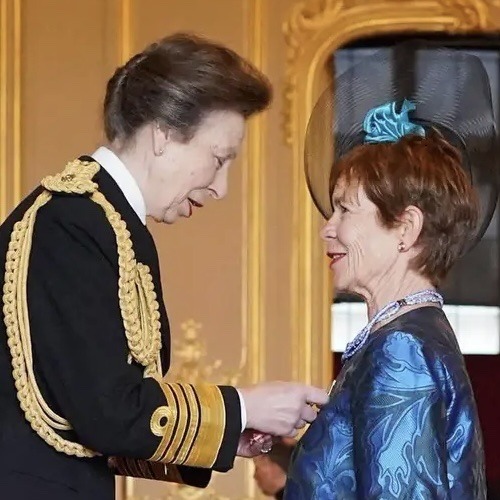





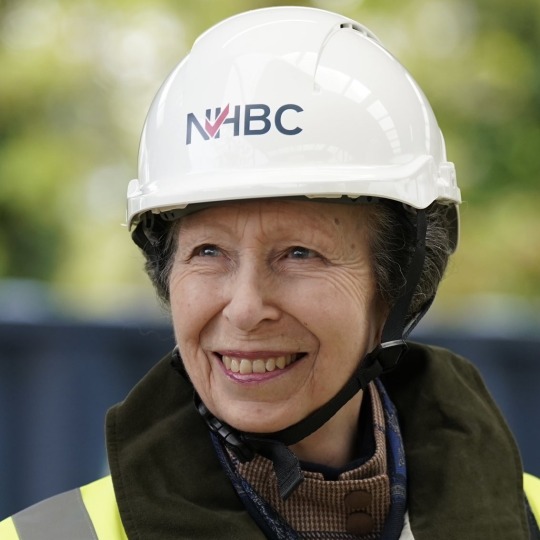
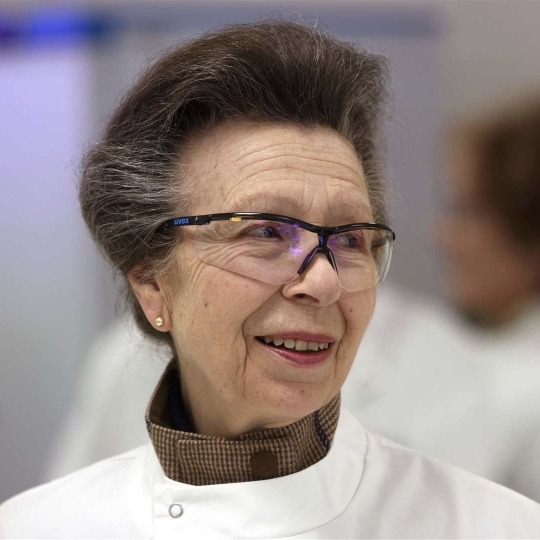
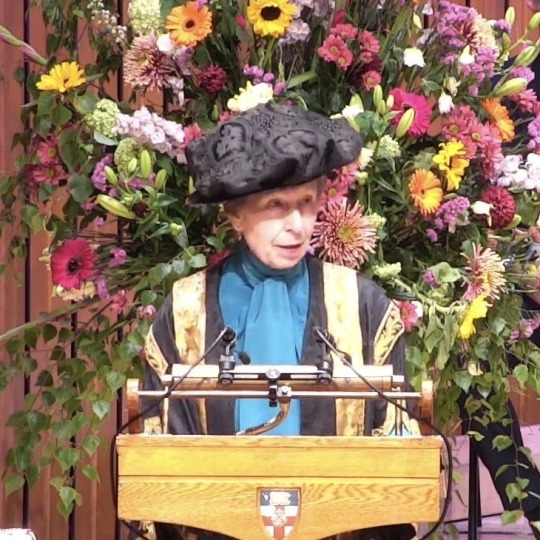
The Princess Royal’s Official Engagements in April 2024
06/04 As President of the Working Clumber Spaniel Society, held a Training Day to mark their 40th Anniversary at Gatcombe Park. 🐶
09/04 On behalf of The King, held an Investiture at Windsor Castle.🎖️
With Sir Tim Opened Tideway’s Chelsea Quay, on Chelsea Embankment in London. 🌊
With Sir Tim, As Master of the Corporation of Trinity House, attended the 70th anniversary of Re-Hallowing Service at St Olave’s Church, followed by a Reception at Trinity House. ⛪️🍾
10/04 Visited Helmshore Mills Textile Museum in Rossendale, Lancashire. 🧵👕
Visited Trawden Village Community Projects in Trawden near Colne, Lancashire. 🏡
Visited HMS VENTURER in build at Venturer Hall in Fife. ⛴️🏴
11/04 In Northern Ireland Princess Anne; 🇮🇪
Visited Fleming Agri Products Limited in Derry. 🚜
Visited Londonderry Port and Harbour Commissioners, to commemorate its 170th Anniversary. 🚢
Visited the South West College Erne Campus building in Enniskillen. 🏫
Visited the renovated Enniskillen Workhouse in Enniskillen. 💼
As Patron of Maritime UK, attended the Northern Ireland Maritime and Offshore Cluster launch Reception at Belfast Harbour Office. ⚓️🥂
12/04 As Royal Patron of the Motor Neurone Disease Association, attended the Northern Ireland Conference at Dunsilly Hotel in Antrim. 🇮🇪👨🦽
As Patron of Tenovus Cancer Care, visited a Mobile Support Unit at Bronglais General Hospital in Aberystwyth. 🏴🏥
15/04 With Sir Tim As the Former President of the Royal Association of British Dairy Farmers, presented The Princess Royal Award and Royal Dairy Innovation Award at Gatcombe Park. 🐄🥛🏆
16/04 As Royal Patron of the National Coastwatch Institution, this visited Fleetwood Station in Fleetwood, followed by a Reception at Marine Hall. 🔎🌊
As Patron of the Pony Club, visited Wrea Green Equitation Centre in Preston, to mark the 25th of the Pony Club Centre Membership Scheme. 🐴
As President of the Carers Trust, visited Sefton Carers Centre in Liverpool, to mark its 30th anniversary. 🧑🦯🩺
17/04 On behalf of The King, held two Investitures at Windsor Castle. 🎖️
18/04 Attended the Lord Mayor's Big Curry Lunch at Guildhall. 🍛
As President of The Duke of Edinburgh's Commonwealth Study Conferences, held a Dinner at Buckingham Palace for the President's Council and the Caribbean-Canada Leaders' Dialogue. 🗺️🍽️
19/04 On behalf of The King, held an Investiture at Buckingham Palace. 🎖️
21/04 Unofficial As President of the Working Clumber Spaniel Society, hosted a test day at Gatcombe Park. 🐶
22/04 As trustee of the council of St George’s House Princess Anne;
Attended a council meeting at St George’s House. 💼
Attended a Lecture in St. George's Chapel. 🎓
Attended a Dinner at the Vicars' Hall. 🍽️
23/04 On behalf of The King, held two Investitures at Windsor Castle. 🎖️
As Royal Patron of the Special Boat Service Association, held a Dinner at Windsor Castle. 🚤🍽️
24/04 As President of the Riding for the Disabled Association, visited the Cavalier Centre, and presented The King’s Awards for Voluntary Service in Farley, Much Wenlock. 🐎🏆
As Patron of Save the Children UK, visited the Lyth, Ellesmere, the birthplace of Eglantyne Jebb. 🏠
Visited the Jebb Memorial Garden at Cremorne Gardens in Ellesmere. ⛲️
25/04 Attended "DNA Day" at Illumina Centre in Great Abington. 🧬
Opened the National House Building Council's Apprenticeship Training Hub at Histon Football Club. 👷
As Patron of the Royal College of Midwives, visited Hinchingbrooke Hospital Maternity Unit. 👶🏥
As Colonel of The Blues and Royals (Royal Horse Guards and 1st Dragoons), visited The Household Cavalry Mounted Regiment at Hyde Park Barracks. 🐴💂
As Chancellor of the University of London, attended an Institute of Commonwealth Studies Reception at the Senate House, to mark its 75th anniversary. 🎓
27/04 As Admiral of the Sea Cadet Corps, attended the National Drill and Piping Competition at HMS Raleigh. 🫡⚓️
30/04 As Guardian of the Chaffinch Trust, attended a Reception at the Reform Club. 🥂
As Chancellor of the University of London, attended a Graduation Ceremony at the Barbican Centre. 🎓
As Commandant-in-Chief of the First Aid Nursing Yeomanry (Princess Royal’s Volunteer Corps), presented Coronation Medals at Wellington Barracks in London. 🫡🎖️
Total official engagements for Anne in April: 39
2024 total so far: 171
Total official engagements accompanied by Tim in April: 3
2024 total so far: 32
FYI - due to certain royal family members being off ill/in recovery I won't be posting everyone's engagement counts out of respect, I am continuing to count them and release the totals at the end of the year.
#aimees unofficial engagement count 2024#april 2024#always there to support his wife#not all engagements are listed on here#if you would like a full list plz dm me 🥰#excited for next month#two overseas visits and the start of the more summery engagements!!!#princess anne#princess royal#tim laurence#timothy laurence#not as many as previous months because she took a few days off after easter
51 notes
·
View notes
Text
What does it mean that Homelander is the only supe that has Compound V incorporated into his DNA? And that he can pass it down to progeny?
A short essay no one asked for (but inspired by @saintmathieublanc ‘s poll about whether HL and Ryan can be depowered)
Reading 1: literal
His DNA consists of Compound V. Which means that Compound V is a nucleotide analogue, a proteinaceous component of histones around which DNA wraps and gets packed into a chromosome, or some kind of non-organic chemical that binds to DNA (DNA intercalators). I actually kind of like the idea that Compound V is a part of histones, because you could handwavely imagine it gets incorporated haphazardly and affects the expression of random genes, turning them on or off, hence its varied effects.
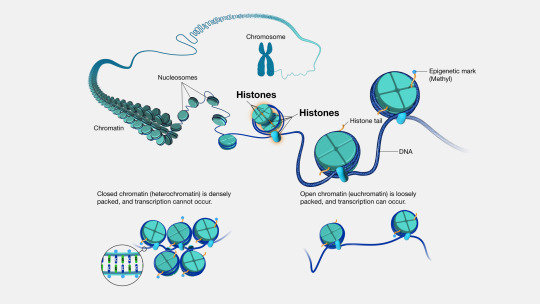
Reason 1 none of these seem likely: DNA replicates constantly, not only during embryonic development but throughout your life. Having DNA be modified but not requiring a constant influx of new Compound V means that the DNA would eventually dilute out to become normal.
Reason 2 these aren’t likely: a proteinaceous histone component injected into infants wouldn’t really exert any effects. Wouldn’t even go into cells. A nucleotide analog or a DNA intercalator chemical could go into cells and effectively act as a DNA damaging agent (this is how some chemo works, in fact). Hard to imagine how randomly damaging DNA would result in gaining of abilities, but I guess formally possible if the damage is somehow directed. The randomness of powers gained could potentially be compatible with “random damage”. But what would then be the difference between Homelander and other supes? The Compound V would then be “part of the DNA” in both cases
Reading 2: which I favor
Compound V is a hormone. Hormones are something one could inject into a baby to exert profound effects, even if only done once. What’s not clear of course is why the hormone exerts such different effects in different babies. One handwavy model is that, unlike testosterone or estrogen or melatonin or adrenaline, with defined programs being triggered, Compound V is a hormone that creates artificial stresses in the body that tissue will respond to adaptively, and that this process is stochastic/random. This would be consistent with Compound V being better as something taken as a child- more tissue plasticity.
What does it mean that Homelander’s DNA “contains Compound V” in this schema? Hormones aren’t part of DNA. But they could have engineered a gene that encodes an enzyme (or a set of genes encoding a set of enzymes) that generate Compound V out of a common steroid precursor like cholesterol. They may also have encoded whatever receptor in the human body binds Compound V to be expressed more highly or in specific tissue in the body, but this is less crucial. This would even be somewhat realistic for 1981 era biotech. In this scenario, Homelander has been exposed to Compound V throughout embryonic development (earlier than everyone else), and has the ability to make more all the time. This would be consistent with it being heritable: Ryan didn’t need any exogenous Compound V, he had the genes to generate it himself.
If Soldier Boy’s radiation undoes the effects of Compound V out of people who have had one exposure, this would mean his radiation would be less effective on Homelander and Ryan: they would eventually generate more Compound V and with time presumably regain their powers. And that’s my final answer to @saintmathieublanc ‘s poll 🧐
#compound V logistics#no one:#literally no one:#me: writes essay about stuff neither the Boys writers nor Garth Ennis devoted any thought to#homelander#homelander meta#biology#the boys#the boys tv#mystuff
128 notes
·
View notes
Text

CHECK THIS OUTTTT this is an article about a really neat paper by neumann et al. that was published in science on the 28th of june that looks at epigentic editing that may help in treating prion disease and may have applications in other neurodegenerative diseases which cause protein accumulation like huntingtons, alzheimers, or parkinsons.
they created a fusion protein named CHARM. charm stands for Coupled Histone Tail for Autoinhibition Release of Methyltransferase. broken down, this name refers to:
the coupled histone tail: histones are proteins that help package DNA in cells. the "tail" of a histone is a part that can interact with other molecules. tn CHARM, this histone tail is used to help guide the tool to the right spot on the DNA, in this case the area which codes for PRP (prion proteins).
an autoinhibition release: this means that CHARM can remove a natural "brake" or stopper that normally keeps the DNA-modifying enzyme (methyltransferase) from working.
methyltransferase: this is the enzyme that adds the methyl groups (chemical tags) to the DNA, which the cell to ignore that part of the DNA and not produce the prion protein. basically a little DNI marker on the DNA.
rather than using CRISPR which is too large to do what they want, they used zinc finger proteins which are much smaller and are targeted to the prion protein. when the zinc finger protein attaches to the prion gene, the methyltransferase then recruits methyl groups to the DNA sequence telling the cell to ignore it!
sonia vallabh, one of the authors of the paper gave a ted talk earlier this month about prion disease. she was diagnosed with familial creutzfeldt-jakob disease and has been working on treatments and a cure since her diagnosis.
youtube
11 notes
·
View notes